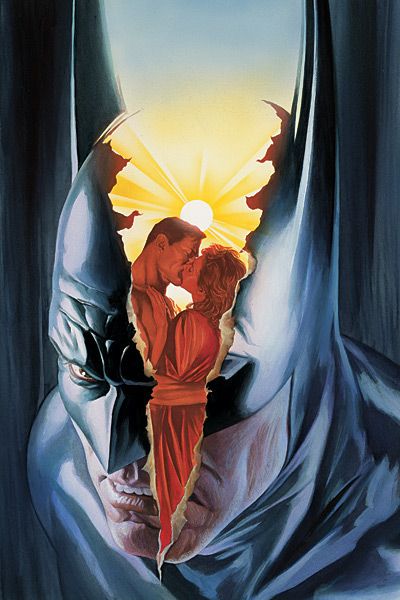Tony Daniel's work seems more inconsistent than ever in this second issue of "Batman R.I.P." Perhaps the work was rushed, or perhaps Sandu Florea's inks don't quite mesh with Daniel's style, but whatever the reason, the art in this issue hurts what is otherwise an intriguing series of plot developments. Not only does Bruce Wayne's face shift from narrow and angular to wide-jawed and chiseled, but on page four, Alfred comments on Batman's shoulder wound even though he's depicted as standing behind Batman. Batman's cape completely covers the bleeding, but somehow Alfred knows about it. That's a big problem, because it seems like maybe Alfred's impossible knowledge is a clue of some sort - -and in Morrison's "Batman," clues are everywhere -- but it's more than likely just a mistake in the artwork. After the coloring gaffe in the previous issue, when blood was added to the final page when it wasn't supposed to be, I don't trust the artists enough to believe everything I see. And that's no good in a story where every little detail should matter.
At least "Batman" #677 addresses some of the speculation surrounding the clues that have appeared thus far. We find out that Alfred is more than he has appeared to be -- is he the Black Glove? And Thomas Wayne may be alive after possibly faking his own death years ago -- is he the Black Glove? And Jezebel Jet confronts Bruce Wayne about the possibility that his fractured psyche has created a second, evil persona -- is he the Black Glove? None of these suspects is identified as anything other than a possibility, but this issue certainly tackles the question of the mysterious identity of the Black Glove in a more direct way that we've seen in previous installments. It seems like Morrison is moving toward a big reveal, although like a good mystery, the story is full of red herrings and misdirection. The Thomas Wayne situation, though, is certainly a shocker. Even if he's not ultimately the Black Glove, the "truth" about his background, as revealed in this issue, completely changes the game. No longer is he the noble father-figure, romanticized in Batman's memory. Or at least he won't be, once Batman finds out the truth for himself. Then again, if Batman's such a great detective, why doesn't he know the truth of his father's past already? Maybe this hitherto unknown past of his father is false -- created by the Black Glove. That's what's great about Morrison's mystery here -- we have plenty of things to speculate about, and they all seem tantalizing.
The Club of Villains also makes their move in "Batman" #677, with a combination of post-hypnotic suggestion and home invasion, they violate the sanctity of the Batcave and thrust the story toward a climax.
I wish Morrison had a better artist joining him on this strange journey, but "Batman R.I.P." is shaping up to be a classic. The more we learn about the Black Glove, the more we appreciate Morrison's earlier work on this series, as small moments from months ago, or even years ago, matter more in retrospect. Morrison's "Batman" has re-engaged my interest in the Batman mythos, and I'm eager to see how he's going to tie the Black Glove reveal into the "death" of Batman. Because even though I've been "sure" of the Black Glove's identity about half a dozen times, I really don't know what Morrison has planned.

